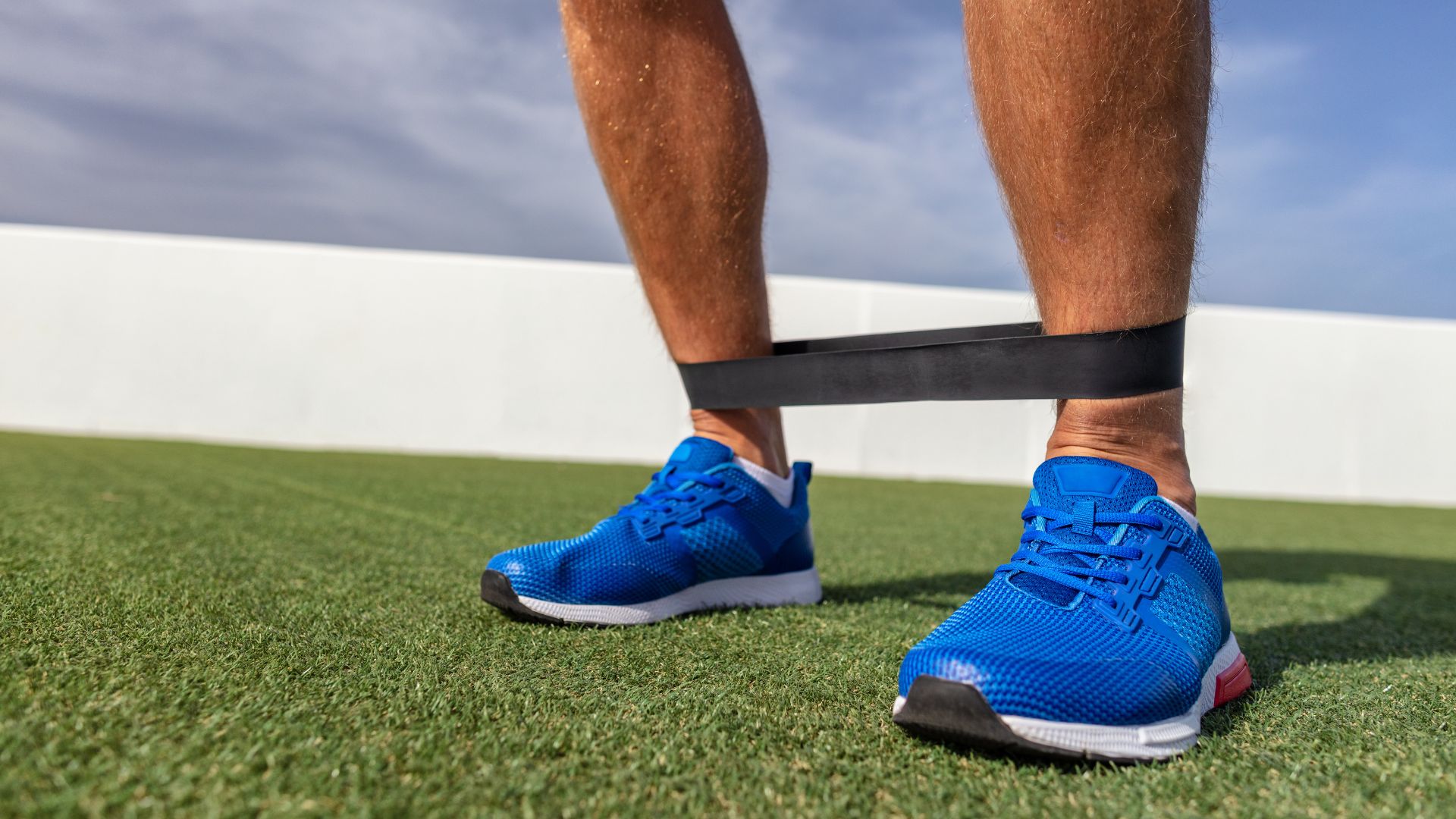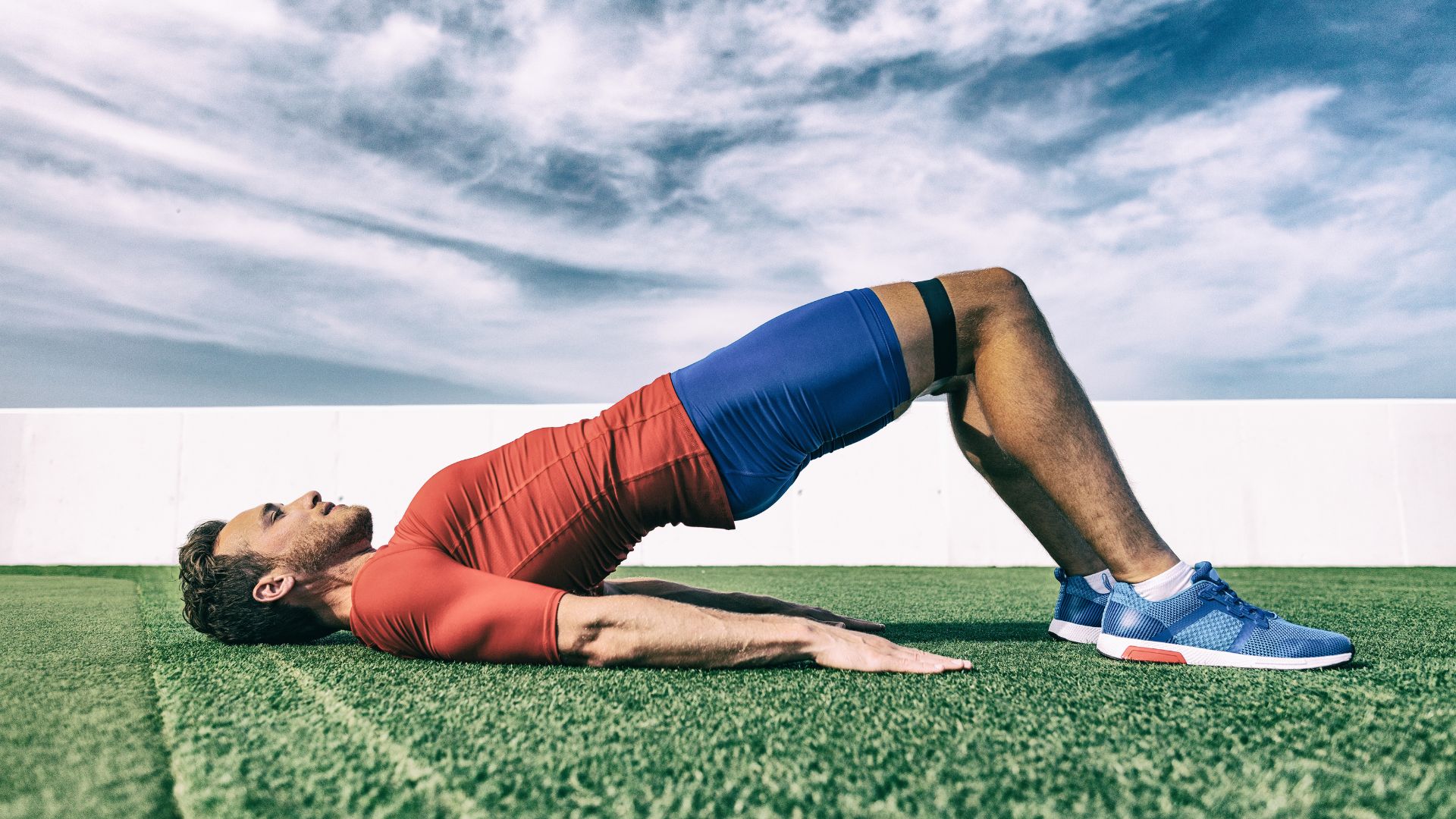Incorporating glute band exercises into your workout routine could be a game changer for enhancing glute strength and definition. The glutes are made of three muscles: the gluteus medius, gluteus minimus, and gluteus maximus. Resistance bands offer multiple exercises to provide constant tension to each muscle for growth.
There are different types of resistance bands based on strength levels and functional design. Ranging from booty bands, which are short and wrapped around the thighs, to longer multi-purpose bands, these tools can fit into different positions.
While weights are indispensable resistance training tools, resistance bands also work fine for muscle growth, and the glutes are no exception. Without further ado, let’s discuss everything you need to know about building big, strong glutes with resistance bands.
Can resistance bands build glutes?

The gluteus maximus is the largest muscle in the body. This leads many people to think that the glutes need to be loaded with a lot of weight before they can grow. However, resistance bands can provide plenty of tension for the glutes to build over time.
Research has shown that glute exercises with bands or conventional weights would produce similar strength gains for different population groups. So, there is no doubt that resistance bands can build your glutes. You just need to know the right exercises to perform to get a good stimulus and instigate muscle growth.
How do you activate glutes with resistance bands?

There are many ways and exercises to activate the glutes using resistance bands. Think about any exercise to train glutes using weights, whether free weights or machines; there is almost always a resistance band alternative.
A good number of people only use resistance bands for glute pre-activation — a way to get blood flowing into the muscles before the actual workout. However, more people should use resistance bands during their actual glute workout because research shows that resistance-band exercises, particularly the banded hip thrust, have a high level of glute activation and can instigate muscle growth.
Nonetheless, because resistance bands are less likely to cause injury, they are safer warmup tools, so using them to activate the glutes before a workout isn’t a bad idea. You can perform exercises like glute bridges, donkey kicks, and glute kickbacks using resistance bands. These exercises activate the glutes through hip extension, one of the muscle group’s functions.
The glutes are also important for the external rotation of the hip. External rotation exercises like clam shells and fire hydrants can activate the glutes using this function.
How long does it take to grow glutes with resistance bands?

Muscle and strength growth results from various factors, including genetic predisposition and consistency. If you’re consistent, you’ll likely notice slight changes in the first few weeks of training. However, this may not be the case for everyone, so don’t be discouraged when you don’t notice any growth after some weeks.
If you feel like your glutes are not growing, even after adding intensity, focus on progressive overload. With resistance bands, this would involve using tougher, stronger bands or performing more reps and sets. Progressive overload is essential for building muscle and strength; it is also an indicator of growth because if you can do more, you’re likely stronger.
Additionally, to increase the chances of quick muscle growth with resistance bands, make your exercises as intense as you can. Buying stronger, tougher bands also comes into play here. Most bands are color-coded based on their strength, so you can figure out which one provides more tension. Another way to make your exercises more intense is to perform supersets. These will task the glutes more and cause them to grow.
5 resistance band exercises for stronger glutes

Banded squats
Banded squats are simply a squat variation with a booty band. Placed just above the knee, the booty band increases lateral resistance, thereby engaging the hip abduction muscles, the gluteus medius, and the gluteus minimus. As you squat, the gluteus maximus also gets heavily engaged, as squatting involves hip extension.
This hip extension movement, coupled with the lateral resistance provided by the booty band, creates a good stimulus for all the gluteal muscles. Here’s how to perform banded squats.
Instructions:
- Place a resistance band around your legs just above your knees.
- Stand with feet shoulder-width apart. Keep your chest up and core engaged.
- Push your hips back and bend your knees to lower into a squat, making sure your knees don’t cave in. Pause when your thighs are parallel to the floor.
- Press through your heels to return to the standing position, and repeat for three sets of eight to 12 reps.
Glute kickbacks
Glute kickbacks are a staple for engaging the gluteus maximus and building lower body muscle with resistance bands. Here’s how to perform this exercise.
Instructions:
- Secure a resistance band around one ankle and fasten the other end onto a sturdy anchor.
- Stand facing the surface for support, and hold it for balance. Keep your standing leg slightly bent, with your core engaged.
- Kick the other leg straight back, keeping your foot flexed and your back arched.
- Return to the starting position, repeat for 12 to 15 reps, and switch to the other leg. Complete three to four sets.
Banded glute bridge
The banded glute bridge is another hip extension exercise for the glutes. A normal glute bridge mimics a hip thrust and targets the gluteus maximus.
However, like in the banded squats described above, a booty band increases lateral resistance and forces hip abduction. This causes the gluteus medius and minimus to play a bigger role in the movement. Here’s how to perform the banded glute bridge.
Instructions:
- Place a resistance band just above your knees.
- Lie on your back with your knees bent and feet flat on the ground, hip-width apart.
- Push through your heels and lift your hips towards the ceiling, squeezing your glutes at the top. Your body should form a straight line from your knees to your shoulders.
- Slowly lower your hips to the starting position and repeat for four sets of 12 to 15 reps.
Romanian deadlifts
Romanian deadlifts are great resistance band exercises for the hamstrings and glutes, and they involve hip extension. Here’s how to perform the exercise with resistance bands.
Instructions:
- Stand with feet hip-width apart, stepping on the middle of a resistance band. Hold the ends of the band with both hands, keeping a slight bend in your knees.
- Hinge at the hip to lower your torso, keeping your back flat and engaged.
- Push your hips back, and bend down until you feel a stretch in your hamstrings, then drive through your heels to return to the standing position.
- Repeat for three sets of 10 to 12 reps.
Banded abductors
The abductor/adductor machine is a great option for using an abductor movement to grow the gluteus medius and minimus. But there’s nothing to worry about if you don’t have access to this machine. Resistance bands could serve the same purpose. Here’s what to do.
Instructions:
- Place a resistance band around your legs, just above your knees.
- Stand with feet shoulder-width apart, keeping the band taut but not completely stretched.
- Shift your weight to one foot, and with control, move the other leg up and out to the side against the band’s resistance.
- Return the moved leg to the starting position, maintaining tension in the band.
- Repeat for eight to 12 reps before switching to the other leg. Complete three sets.




